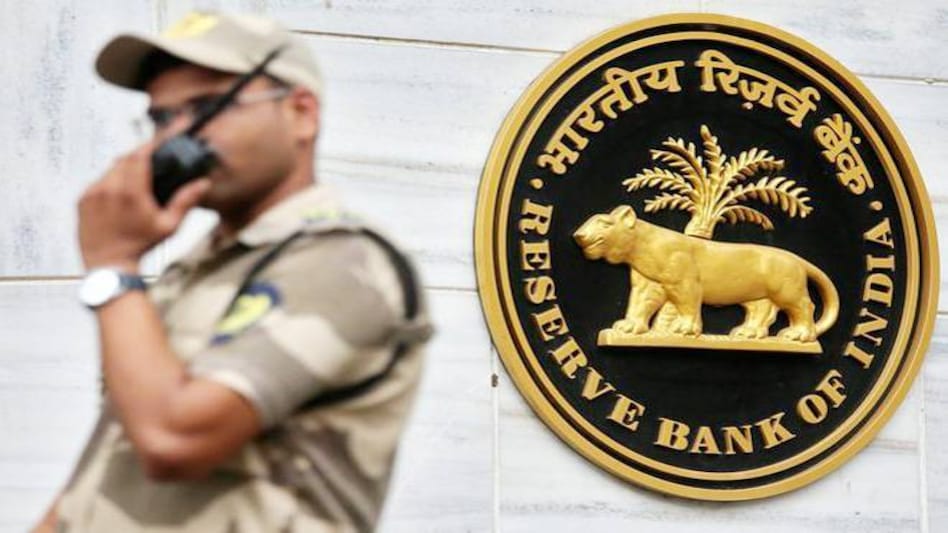 RBI on Thursday cut repo rate by 25 basis points to 6 per cent and maintained the neutral stance of monetary policy, in its first bi-monthly rate review of financial year 2019-2020
RBI on Thursday cut repo rate by 25 basis points to 6 per cent and maintained the neutral stance of monetary policy, in its first bi-monthly rate review of financial year 2019-2020 RBI on Thursday cut repo rate by 25 basis points to 6 per cent and maintained the neutral stance of monetary policy, in its first bi-monthly rate review of financial year 2019-2020
RBI on Thursday cut repo rate by 25 basis points to 6 per cent and maintained the neutral stance of monetary policy, in its first bi-monthly rate review of financial year 2019-2020In line with market expectations, the Reserve Bank of India (RBI) on Thursday lowered repo rate by 25 basis points to 6 per cent and maintained the neutral stance of monetary policy, in its first bi-monthly rate review of financial year 2019-2020. Consequently, the reverse repo rate under the liquidity adjustment facility (LAF) stands adjusted to 5.75 per cent, and the marginal standing facility (MSF) rate and the Bank Rate to 6.25 per cent.
Here're the key takeaways from the RBI policy meet:
Loan EMI likely to come down
The six-member Monetary Policy Committee (MPC), headed by RBI Governor Shaktikanta Das, reduced the repo rate for second consecutive time by 25 basis points to 6.0 per cent from 6.25 per cent with immediate effect. This is good news for borrower as EMIs are likely to go down for retail borrowers assuming that banks pass on the benefits of the lowered rates to the end consumers.
As the central bank lowers the key policy rates, it is likely that banks will follow suit and reduce their marginal cost of funds based lending rates (MCLR). The MCLR is an internal benchmark below which banks cannot lend, except in some cases allowed by the RBI. Recently, several banks have lowered their MCLRs in select tenors by 5-15 basis points in the past month, including ICICI Bank, HDFC Bank, Bank of Baroda, Punjab National Bank, Kotak Mahindra Bank, YES Bank and Union Bank of India.
Also Read: RBI repo rate cut: How much will your home loan EMIs reduce?
GDP growth forecast lowered to 7.2%
The RBI has cut India's GDP growth projection for 2019-20 to 7.2%, from 7.4% forecasted in February policy meet, because of declaration in domestic economic activity due to due to a slowdown in consumption, both public and private. Adding to it, slower pace of global economic growth in back of soft demand and contracting manufacturing activity may also hurt India's growth prospects.
Inflation target lowered to 2.4% in Q4
The monetary policy committee (MPC) lowered retail inflation to 2.4 per cent for the fourth quarter of 2018-19, which was pegged at 2.8 per cent in the last policy meet, citing a normal monsoon. The RBI said that CPI inflation excluding food and fuel in February was lower than expected, which has imparted some downward bias to headline inflation. As a result, CPI projection has been revised downwards to 2.4 per cent in Q4FY19, 2.9-3 per cent in H1FY20 and 3.5-3.8 per cent in H2FY20, with risks broadly balanced.
Also Read: Overall credit growth to MSMEs remains neutral, says RBI Governor Shaktikanta Das
Economy facing headwinds amid global uncertainty
The RBI has noted that there are some signs of domestic investment activity weakening as reflected in a slowdown in production and imports of capital goods. The moderation of growth in the global economy might impact India's exports. On the positive side, however, higher financial flows to the commercial sector augur well for economic activity. Private consumption, which has remained resilient, is also expected to get a fillip from public spending in rural areas and an increase in disposable incomes of households due to tax benefits. Business expectations continue to be optimistic. Taking into consideration the above factors, GDP growth for 2019-20 is projected at 7.2 per cent - in the range of 6.8-7.1 per cent in H1:2019-20 and 7.3-7.4 per cent in H2 - with risks evenly balanced.
Tepid credit growth
Credit flows to micro and small as well as medium industries remained tepid, though they improved for large industries, the RBI said in its monetary policy statement. Capacity utilisation (CU) in the manufacturing sector, however, as measured by the Reserve Bank's order books, inventory and capacity utilisation survey (OBICUS), improved to 75.9 per cent in Q3 from 74.8 per cent in Q2. The manufacturing purchasing managers' index (PMI) remained in expansion zone for 20th month in March. The key indicators of investment activity contracted, viz., production of capital goods in January and imports of capital goods in February.
Edited by Chitranjan Kumar